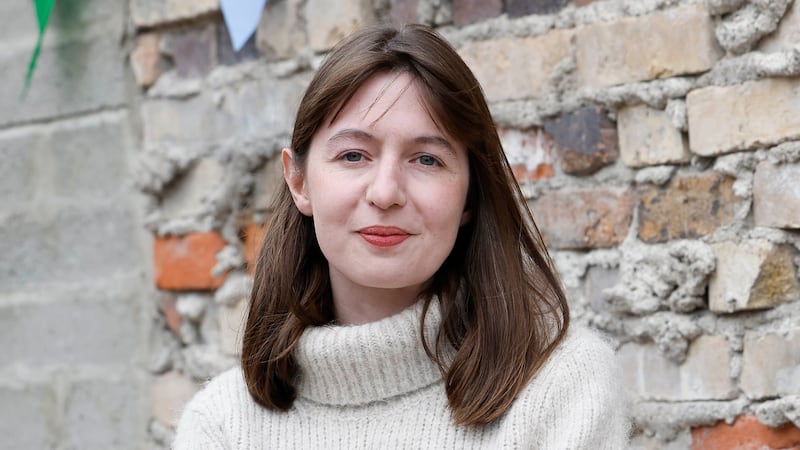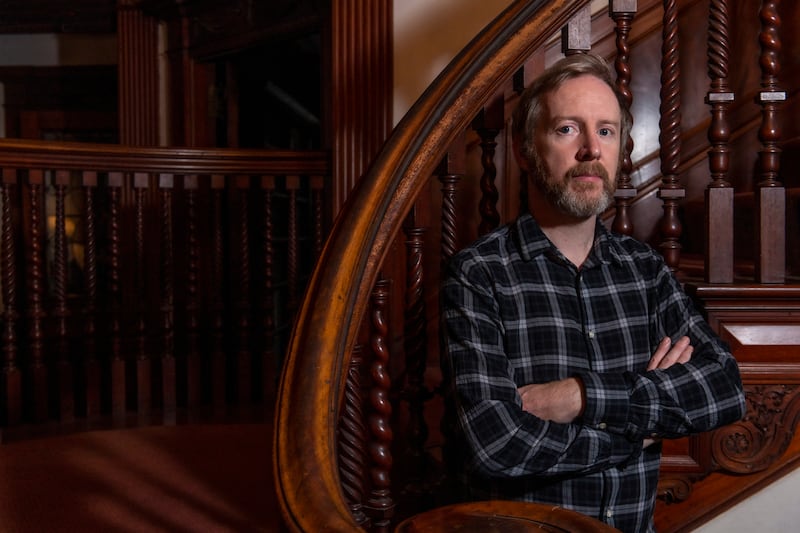The Booker Prize nominations for Paul Lynch, Paul Murray, Sebastian Barry and Elaine Feeney, along with the high-profile international success of writers such as Anna Burns, Claire Keegan and Sally Rooney, have been rightly celebrated as indicators of the continuing accomplishments of contemporary Irish fiction writers over the last 10 to 15 years. Central to this recent creative dynamism has been a new generation of talented young writers who write reflectively about the antagonisms and concerns of their own social and cultural world, a flourishing literary festival ecosystem and the emergence of new home-grown publishing houses and journals. How has Irish fiction responded to the profound changes in Ireland in the last two decades?
The recent boom in Irish fiction has coincided with the immensely convulsive realignments of Irish life that occurred after the collapse of the Celtic Tiger in 2008. The 2010s began as a period of deep social, political and economic crisis in Ireland and the first years of the decade have come to be defined by narratives of national moribundity, widespread disillusionment with Celtic Tiger excess, and not insignificant resentment towards the EU and the global economic order.
Yet by the middle of the decade, Ireland had entered an unprecedented phase of social, constitutional, and political change. Social liberalisation was accelerated through the introduction of Civil Partnership (2010) and Marriage Equality (2015), the election of Leo Varadkar as the first openly gay Taoiseach (2017) and the repeal of the Eighth Amendment (2018).
A gradual turning away from the Anglo-American sphere of influence towards a strengthening sense of common European identity was shaped by antagonism towards the outcome of the Brexit referendum and the election of Donald Trump as President of the United States (2016). Domestically, support for the two traditional major parties Fianna Fáil and Fine Gael continued to decline and Sinn Féin emerged as an alternative political force. In Northern Ireland, Brexit caused a crisis within political unionism, destabilised the Good Friday Agreement consensus, and forced major reconsiderations of North-South and East-West relationships.
From Baby Reindeer and The Traitors to Bodkin and The 2 Johnnies Late Night Lock In: The best and worst television of 2024
100 Years of Solitude review: A woozy, feverish watch to be savoured in bite-sized portions
How your mini travel shampoo is costing your pocket and the planet - here’s an alternative

In these turbulent conditions, where national and global destinies are inextricably linked, Irish prose writing has flourished, producing and reproducing a mixed variety of new and established styles, genres and modes of dissemination in response. In general, the inventive zest and imaginative vigour displayed within Irish literature has reflected and been equal to the rapid cultural displacements and social recalibrations that have characterised Ireland in this period; at the same time, Irish writing has also captured much of the ambivalence, anxiety, and feelings of being overwhelmed that has come to define the last decade and a half.
The last 15 years has also seen the resurgence of the short story, a form whose formal economy and relative brevity afford a particular agility in responding to the contemporary moment
What trends within fiction can be identified? Within the genre of the novel, conventional and more experimental modes of expression have both been successfully deployed. The realist novel, so long a mainstay of Irish literary fiction, has proved particularly well suited to retrospective Tiger-sceptical narratives and millennialist books that tackle themes of personal development, mental health, gender and sexual identity, and belonging to local and global communities. Significantly, a generation of artists, including writers such as Naoise Dolan, Niamh Campbell, and Sally Rooney, have responded to the transformations of their age by registering a profound ambivalence towards the capitalist system.
Other novelists, such as Eimear McBride and Mike McCormack have adopted more experimental techniques in form and language to explore the consequences of personal, social, economic or political disintegration. The effects of untethered late capitalism and social inequality has also been registered in a new cluster of Irish speculative, dystopian and Gothic fictions.

Novels by writers such as Conor O’Callaghan, Danny Denton, Kevin Barry, Paul Murray, Sarah Davis-Goff, Niall Bourke, Catherine Prasifka and Paul Lynch centre on problems and crises that have national and regional manifestations, but are ultimately global in scale and extent: ecological degradation, sea-level rise, food scarcity, pandemics, the rise of artificial intelligence, the potential growth of the alt-right, and the social and psychic effects of neoliberalism and surveillance capitalism. In coming to terms with such issues, these novelists have revealed new modes of being now prevalent in Ireland and the wider world, particularly the emerging forms of identity and subjectivity linked to the digital realm, and a new sense of humanity’s connection to the environment as a function of climate change.
[ Irish writers, thespians and thinkers are having a renaissanceOpens in new window ]
The last 15 years has also seen the resurgence of the short story, a form whose formal economy and relative brevity afford a particular agility in responding to the contemporary moment. The continued artistic and commercial success of short fiction in Ireland has also doubtlessly been enabled by the proliferation of new and more established literary journals both online and in print, an abundance of creative writing courses, and a culture already receptive to the form. But this trend may also be deeply connected to the capacity of short fiction to capture the experiences of what Frank O’Connor once called ‘submerged population groups’.
Collections by writers such as Wendy Erskine and Rosemary Jenkinson, for example, explore fraught questions of identity and class in post-Good Friday Agreement Northern Ireland with wry humour; Colin Barrett and Kevin Barry have tackled post-boom crises of individual lives in urban and rural Ireland; Nicole Flattery’s offbeat stories explore relationships, work, and life and art in global, hypercapitalist conditions. These writers, among many others, attest to the remarkable strength of this genre in capturing how ‘the lonely voice’ in contemporary Ireland.

Such perspectives, which reflect anxieties about the immense global economic and political forces that operate beyond the control of ordinary citizens, underline much of the hesitation towards narratives of national recovery and rejuvenation found in recent Irish writing. This hesitation, it can be argued, has in many ways run contrary to the reversal of fortunes of the Irish economy since the mid-2010s. During this period the phrase “Celtic Phoenix” entered the cultural lexicon, largely as a means to capture Ireland’s apparently miraculous regeneration of itself within the global economic system.
However, this “rebirth” was not a genuine reinvention and renaissance of Ireland’s economy, but rather a reiteration and restoration of previous economic structures based on the same neoliberal logics that had engendered the national and global financial crash in the first instance. For this reason, perhaps, the moniker Celtic Phoenix has not attained the same cultural purchase as the Celtic Tiger as an historicising shorthand for the zeitgeist, and many commentators on Irish literature prefer terms such as “post-crash period”. The reluctance to adopt the phrase Celtic Phoenix more broadly is also doubtlessly connected to a deep and abiding scepticism towards the Celtic Tiger, and the major ongoing legacy of the crash in the form of the housing crisis.
While there has been a disinclination to celebrate narratives of economic recovery, then, Irish literary artists have generally championed the more authentic reinventions of Irish national life connected to social liberalisation in the same period. Yet social reformation was accompanied, and to extend engendered, by painful interrogations of abiding historical traumas: along with referendums on marriage equality and the laws regulating abortion, a number of key reports were produced from 2005 to 2021 on institutional abuse, including the Ferns Report (2005), the Murphy Report (2009), the Ryan Report (2009), the Cloyne Report (2011), the McAleese Report (2013) and the Mother and Baby Homes Commission Report (2021).

The disturbing revelations contained within these reports have opened a space for probing frequently distressing examinations of hitherto taboo subjects and personal accounts of shame, secrecy, illness, repression, and abuse. One literary effect of this exploration can be found in non-fiction prose works – often combing memoir and essay – such as those by Sinéad Gleeson, Emilie Pine, and Sophie White, as well as in novels by writers such as Emma Donoghue and Elaine Feeney. These writers speak to how women in particular have been treated in Irish medical and psychiatric institutions, provoking in turn deeper questions about how the Irish state has historically treated women’s bodies in state and church-run institutions.
The breadth and depth of these concerns show that Irish fiction writing has become an important index of Irish intellectual responses to the challenges of contemporary existence
Other transformations, such as those wrought by changes to the demographic profile of Ireland by inward migration over the last thirty years have brought issues of nationality, race, ethnicity and citizenship into Irish fiction, and have forced the question of literary representation. The fiction of Irish-resident Chinese writer Yan GE offers an example of how writers from a non-Irish background can challenge Irish reader’s perspectives, while the work of a writer such as Melatu Uche Okorie offers an important perspective on the experiences of migrants. Nonetheless, in spite of these, and other, voices in Irish literature, it can be argued that Irish fiction over the last fifteen years has not fully reflected or kept pace with a diversifying population.
Even a cursory survey of Irish fiction since 2008, then, reveals an extraordinary number of concerns, including guardedness towards narratives of national recovery; the deep exploration of contemporary personal and social identity; the imperative to examine histories of trauma and abuse; the liberations, opportunities and challenges opened up by social, cultural and technological transformation; the demographic and cultural effects of international migration and the expansion of definitions of identity; the apparent imperishability of neoliberal capitalism and the global economic system; and the haunting spectres of ecological disaster, civilisational collapse and planetary catastrophe.
The breadth and depth of these concerns show that Irish fiction writing has become an important index of Irish intellectual responses to the challenges of contemporary existence. As we move towards the middle of this ever more troubling decade, it appears that we have been witness to one of the most significant 10 to 15 years in modern Irish literary history, a period of artistic flourishing that shows no sign of abating.
Eoghan Smith and Simon Workman are the editors of the latest Irish Studies Review special edition, The Rise of the Phoenix: Restoration and Renaissance in Contemporary Irish Writing









